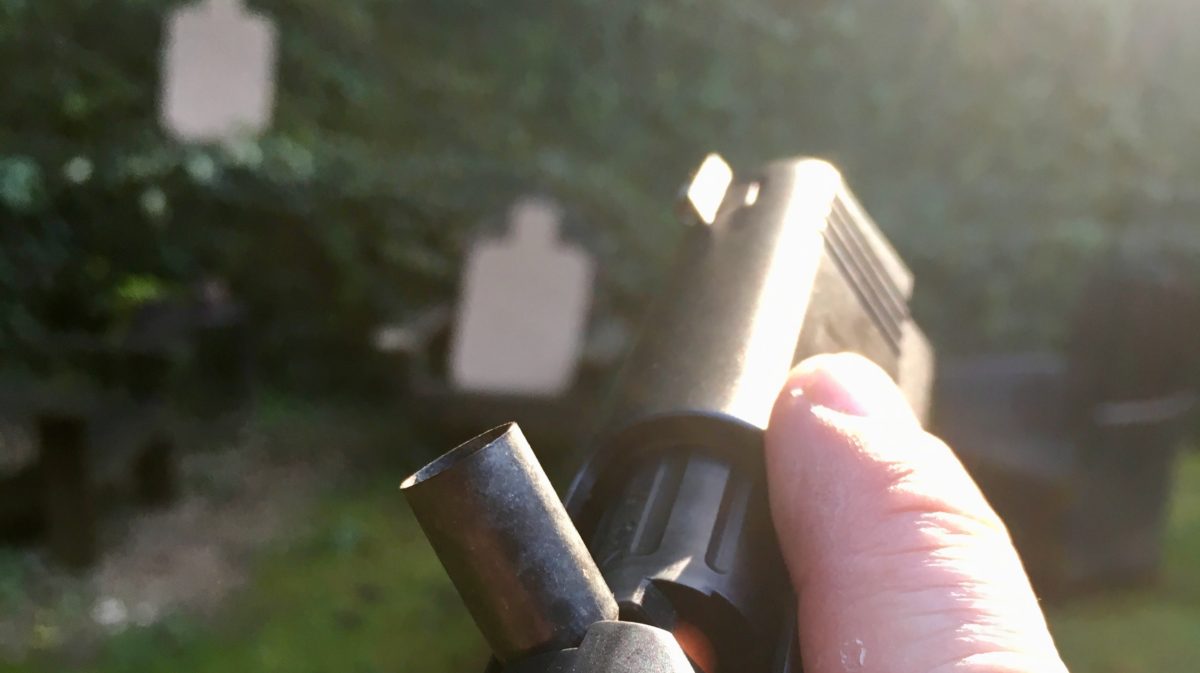My first post of this year briefly discussed my goal of doing 3,650 minutes of dry practice in 2019. These posts are mostly for my own accountability. Here are my results to this point in the year.
January 1 – 11: 200 minutes, January 12 – 31: 140 minutes
February 1 – 15: 140 minutes, February 16 – 28: 130 minutes
March 1 – 15: 160 minutes, March 16 – 31: 160 minutes
April 1 – 15: 140 minutes, April 16 – 30: 160 minutes
May 1 – 15: 140 minutes, May 16 – 31: 170 minutes
June 1 – 15: 180 minutes, June 16 – 30: 160 minutes
July 1-15: 150 minutes, July 16 – 31: 130 minutes
August 1-15: 150 minutes,
August 16: 10 minutes presentation/trigger
August 17: 10 minutes reloads
August 18: 10 minutes malfunctions
August 19: 10 minutes SHO sustainment
August 20: 10 minutes WHO sustainment
August 21: 10 minutes L/R barricades
August 22: 10 minutes unconventional shooting positions
August 23: 10 minutes presentation w/ handheld light
August 24: 10 minutes presentation while moving
August 25: 10 minutes reloads while moving
August 26: 10 minutes malfunctions while moving
August 27: 10 minutes SHO while moving
August 28: 10 minutes WHO while moving
August 29: 10 minutes handheld light while moving
August 30: 10 minutes unconventional shooting positions
August 31: 10 minutes L/R barricades
Monthly Target: 310 minutes
Monthly Actual To Date: 310 minutes
Cumulative Target: 2,430 minutes
Cumulative Actual to Date: 2,470 minutes (41 hours, 10 minutes)
Focus Areas
During this period I focused on sustaining most of the skills I’ve worked on in the first seven and a half months of the year. When replying to comments in my last dry practice report, I realized I have worked on a lot of skills this year. Some of them haven’t been exercised in several weeks or months. I wanted to correct that and cover most of these techniques again.
If I had planned this year better, I probably would have used the first half of each month to practice “new” skills. The second half of each month would have looked a lot like this to keep “old” skills current. If you’re looking for a training plan that just about covers it all, my log above would be an OK starting point.
Breadth & Depth
I want to take just a moment and talk about the breadth and depth of skill training that is possible with dry practice. For a long time, I lived in an extremely urban area. My range options were all indoor. Even the outdoor ones saw so many customers no accommodations were made for “good” shooters. There’s no way they would turn out the lights for me, or let me move laterally or up and down the range.
Now I live in a rural environment. I’ve found a very good range, and I’ve both impressed and become buddies with one of the employees there. They give me some freedom. Still, there are (understandable) limits to what they will let me do on their range. Dry practice lets me practice the full spectrum of skills I want to practice in a safe manner. Things that I have learned in classes, read about in articles, or just want to try are possible to actually practice. The list of stuff this month is a pretty “advanced” list of skills, and dry practice actually lets me develop and maintain these skills.
Dry practice also gives me depth. Look at the days I’ve spent working simple presentations this year. Thousands of repetitions. Even on days when I’m working on something else I always begin and end each session with five two-handed presentations. There have also been only a handful of days this year where I’ve walked out of the house without having practiced drawing my gun. How deeply-ingrained is that skill? How strongly have I myelinated that pathway?
Don’t get me wrong; I’m not bragging about how good I am or celebrating what I’ve achieved so far this year. I do want to get across how valuable dry practice can be. Even if you can shoot weekly, can you practice moving and low light at your range? Can you practice shooting in the seated position, where you begin facing uprange? If you can shoot every week, are you actually shooting every week? Dry practice is awesome in providing extreme breadth and depth of skill. If you’re not doing it, what are you waiting for?
If you aren’t dry practicing. . . WHY NOT? It’s not hard to find 10 minutes a day to dry practice, and it’s COMPLETELY FREE. Take ten minutes you’d be spending vegging out on Instagram or in front of the TV and turn it into a tangible skill.


Back in the armored car days a friend and I rented out a range after their normal hours in order to practice some unconventional ideas. Specifically, walking while carrying a bag and having to draw and shoot one handed. It was expensive but helpful. It wasn’t dry fire, but you reminded me of it with the lateral movement comment, and when I think about it that’s probably something I could stand to dry practice from time to time.